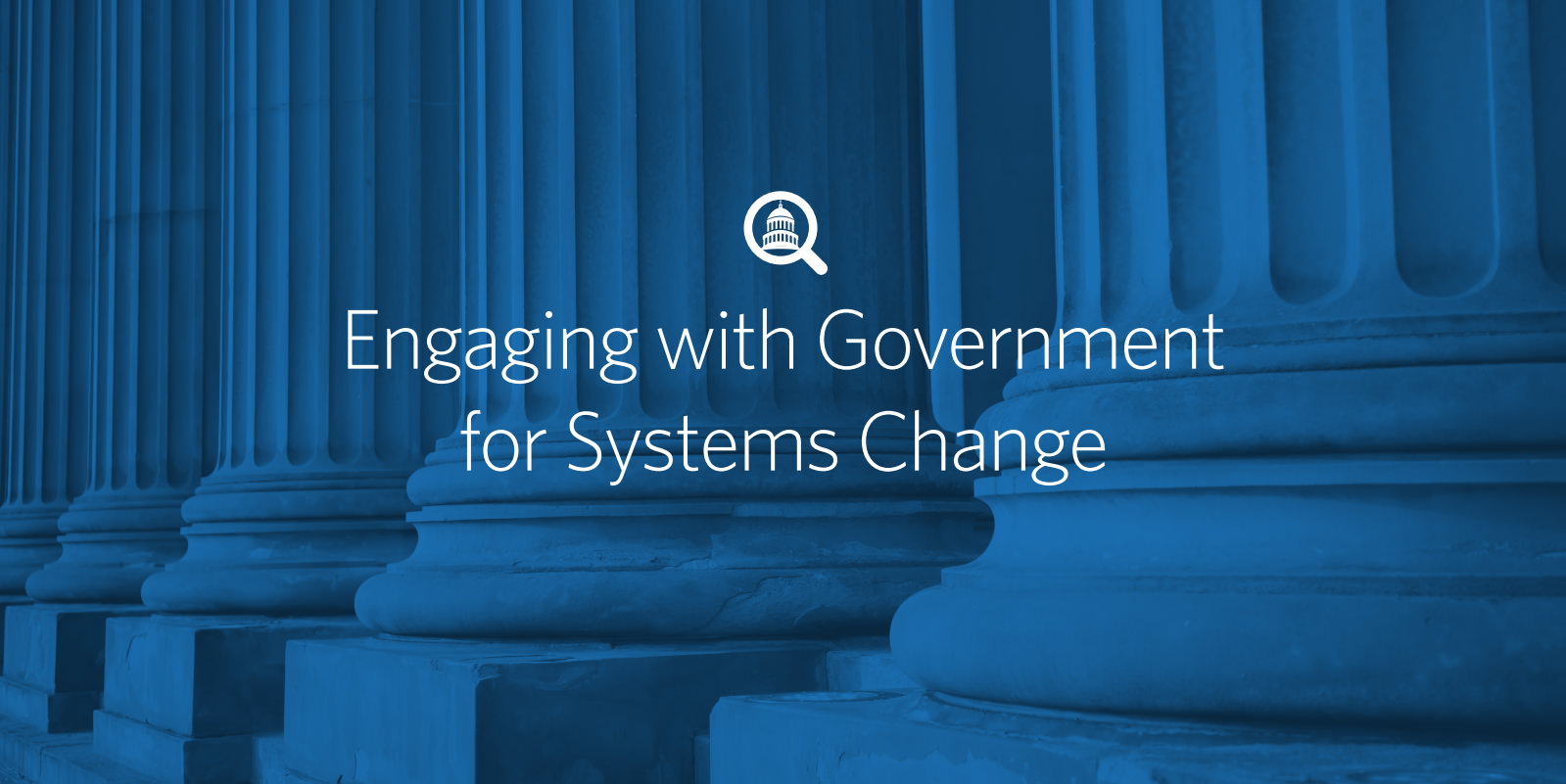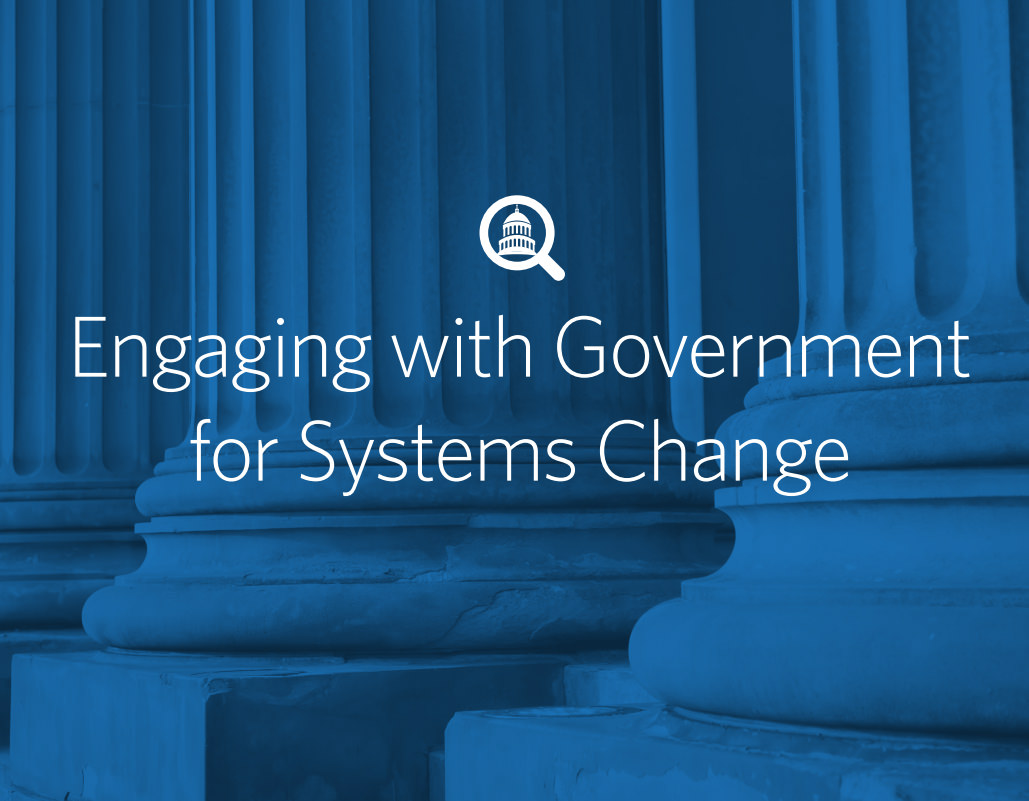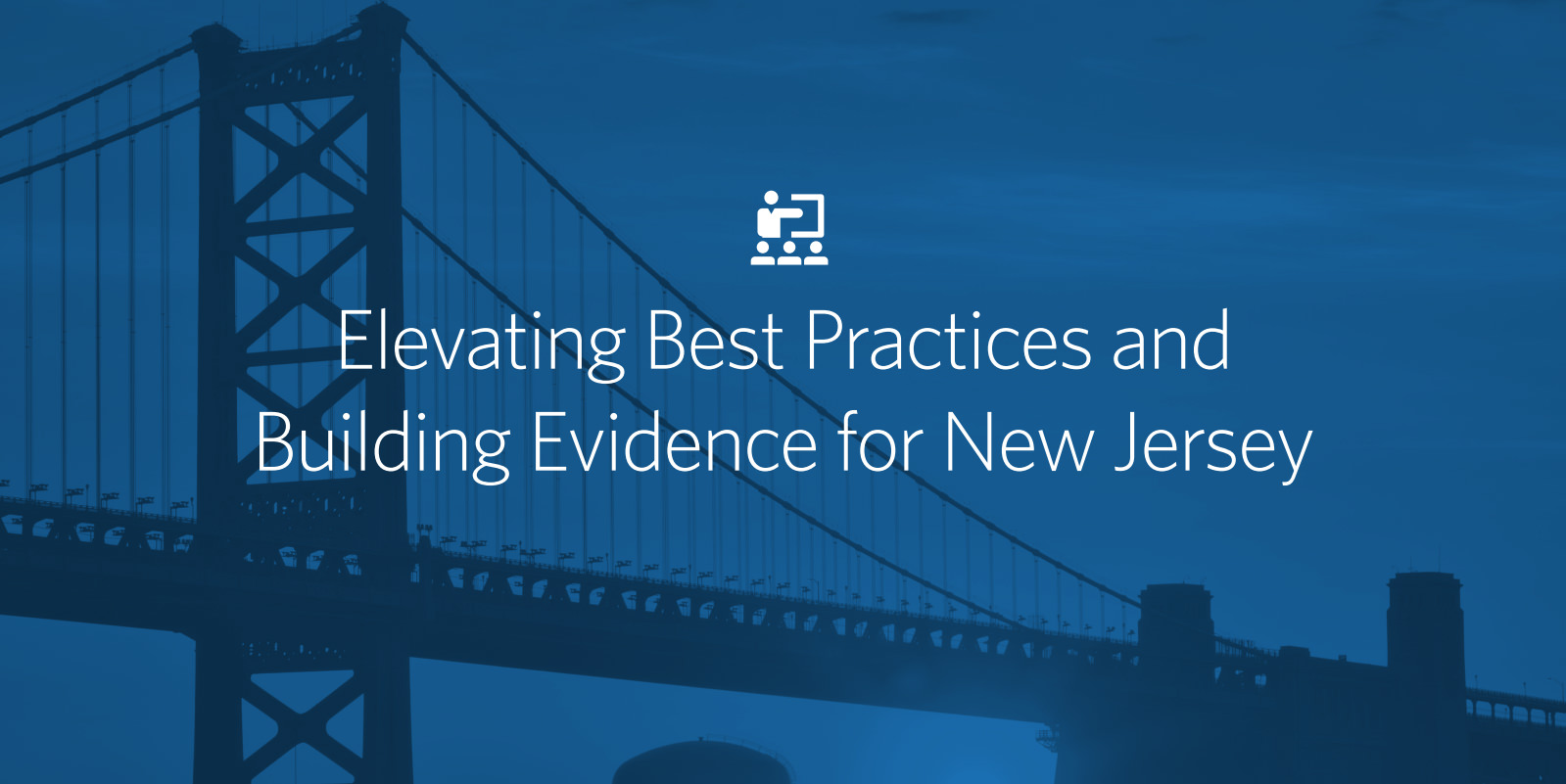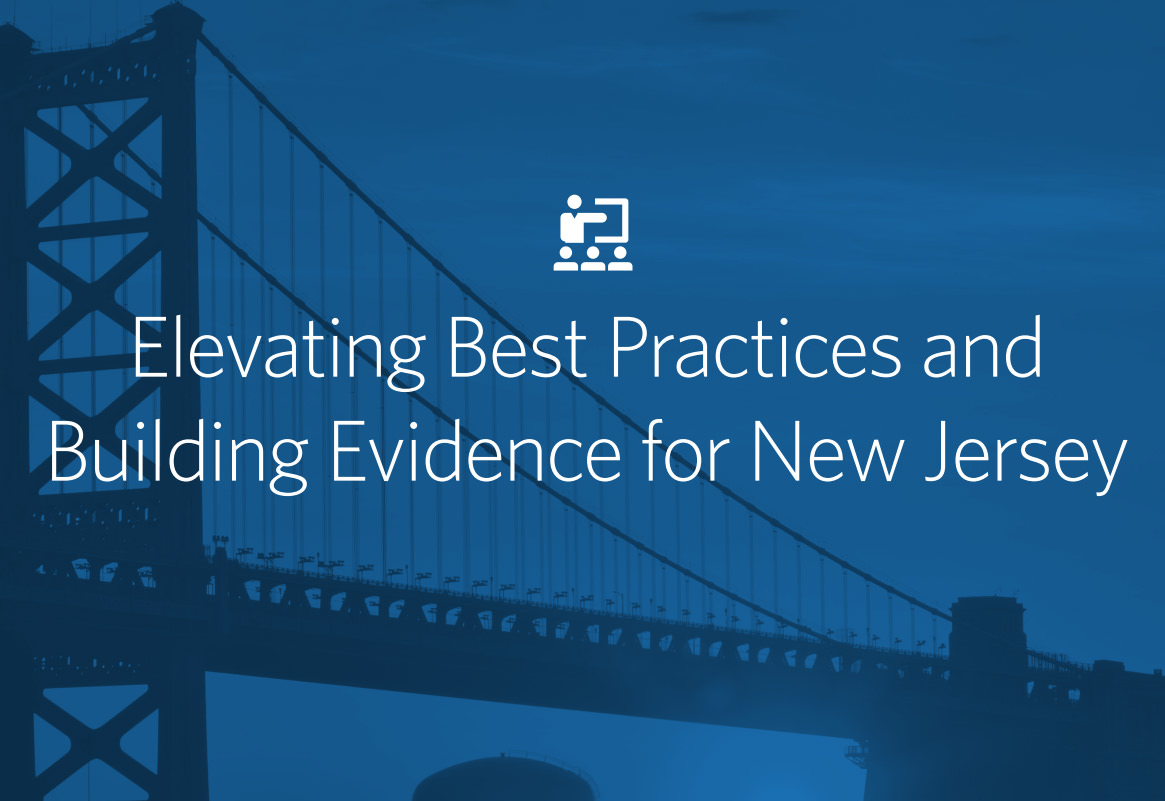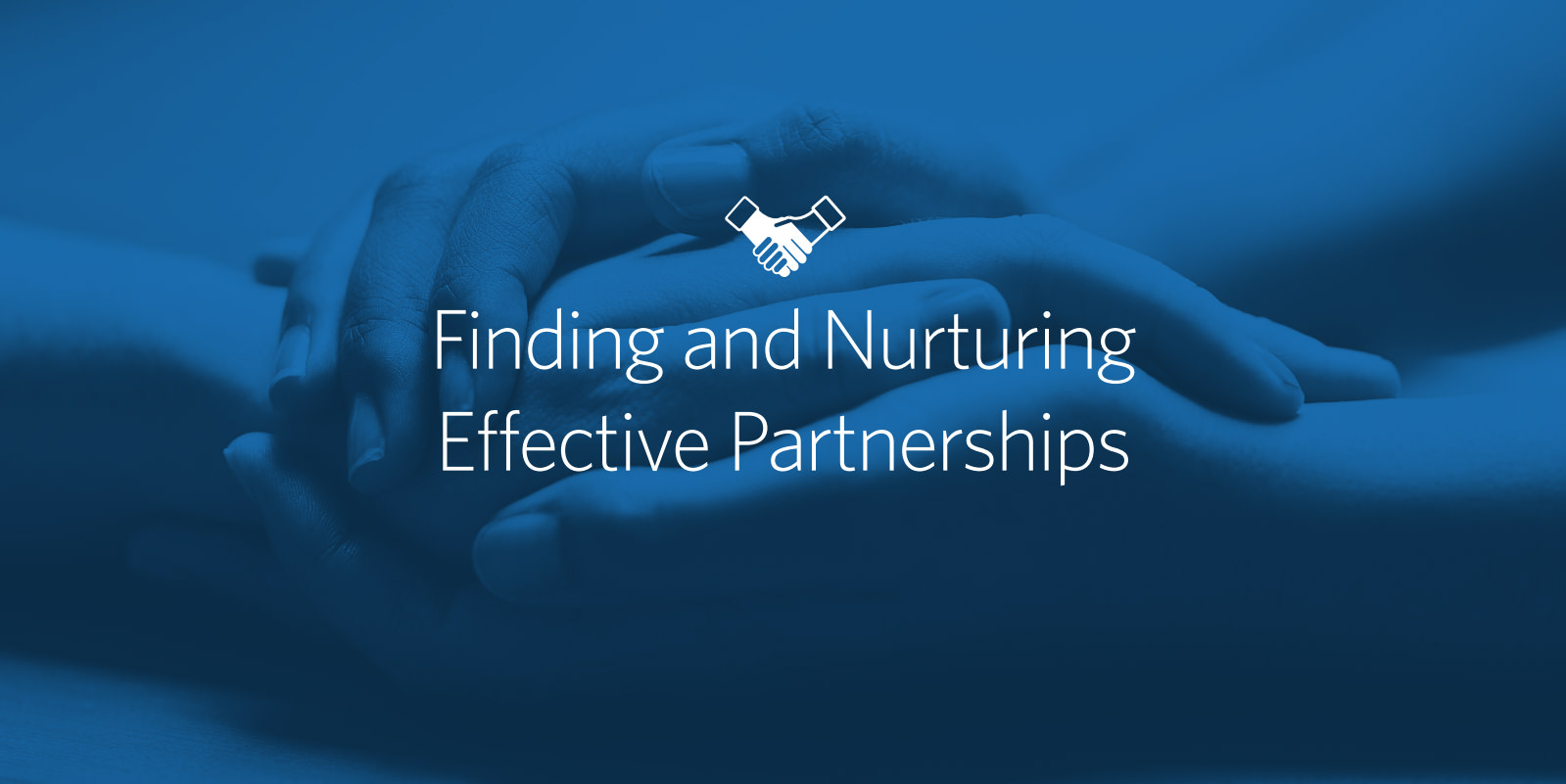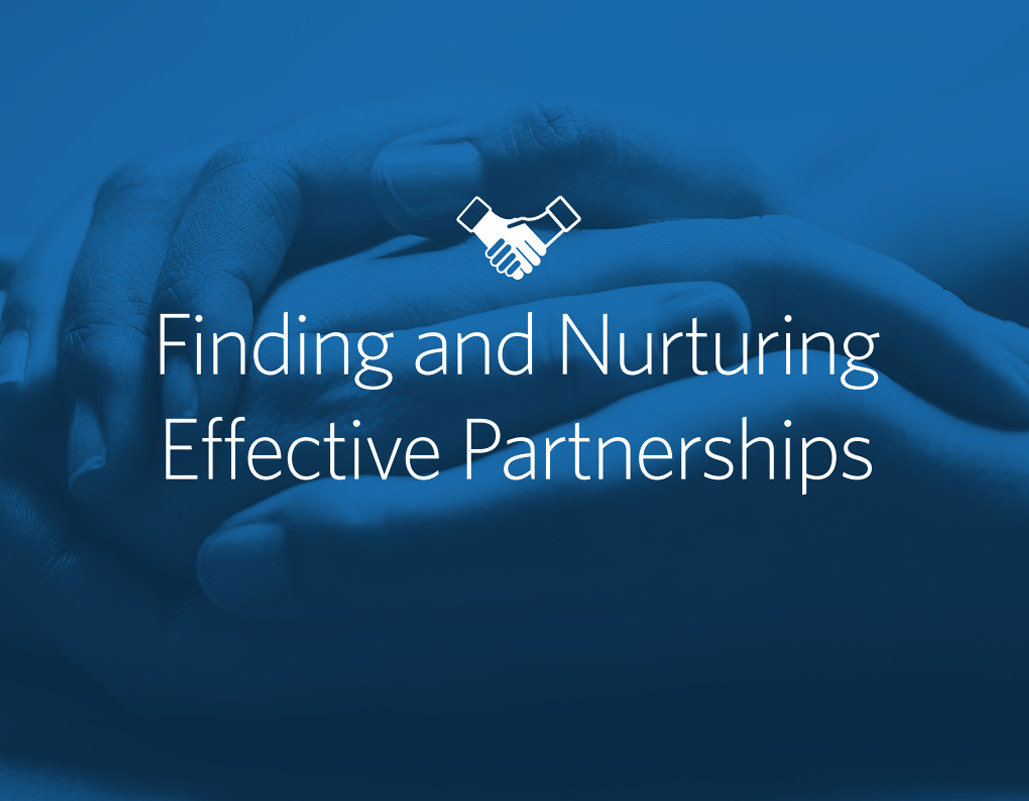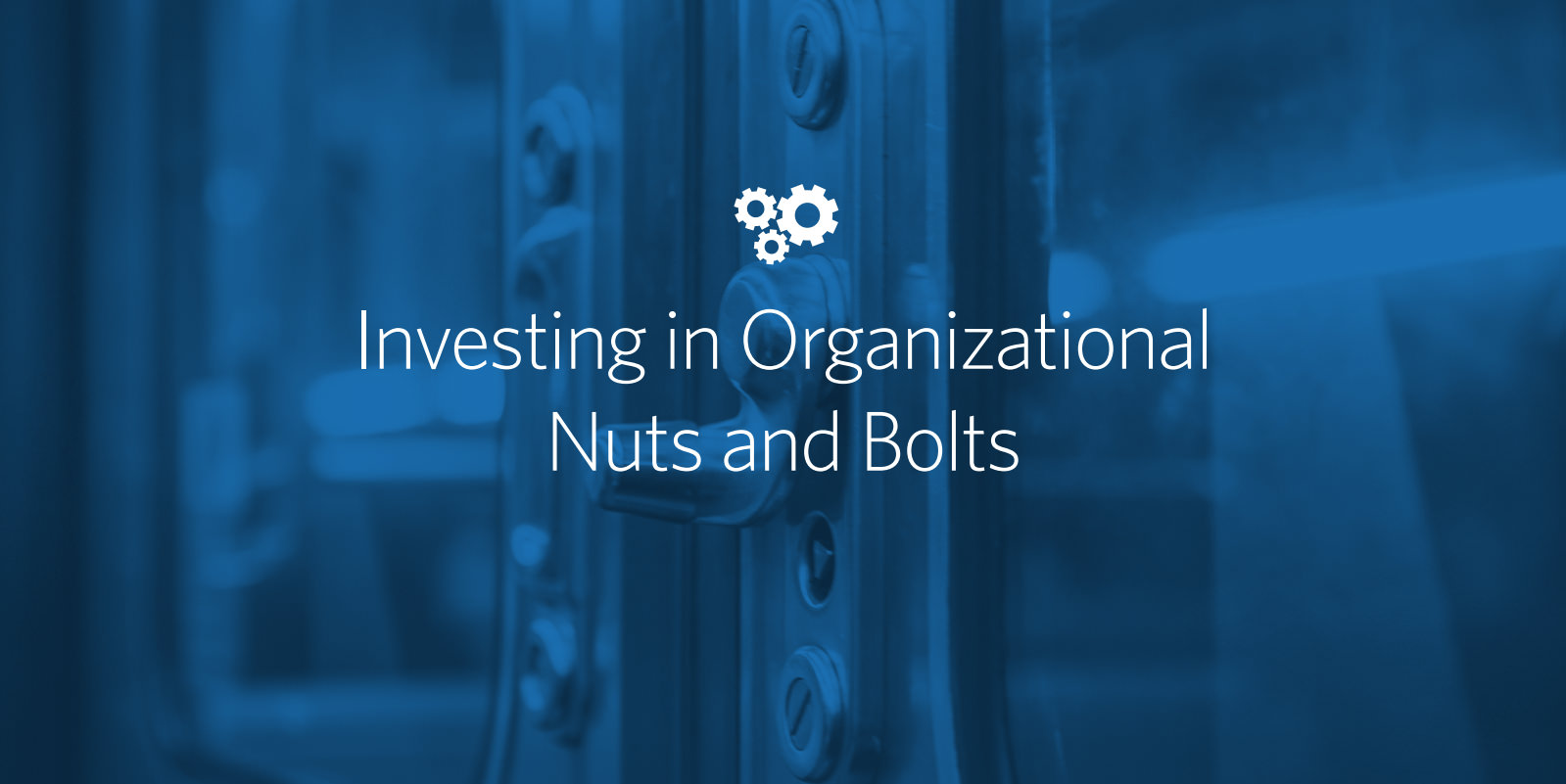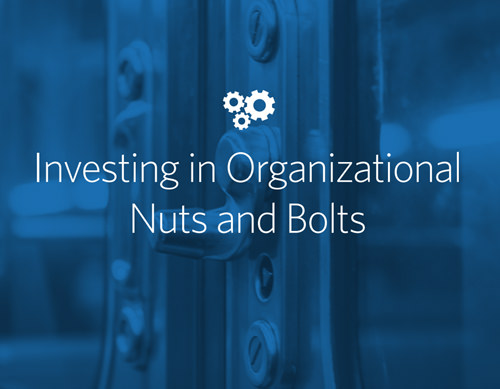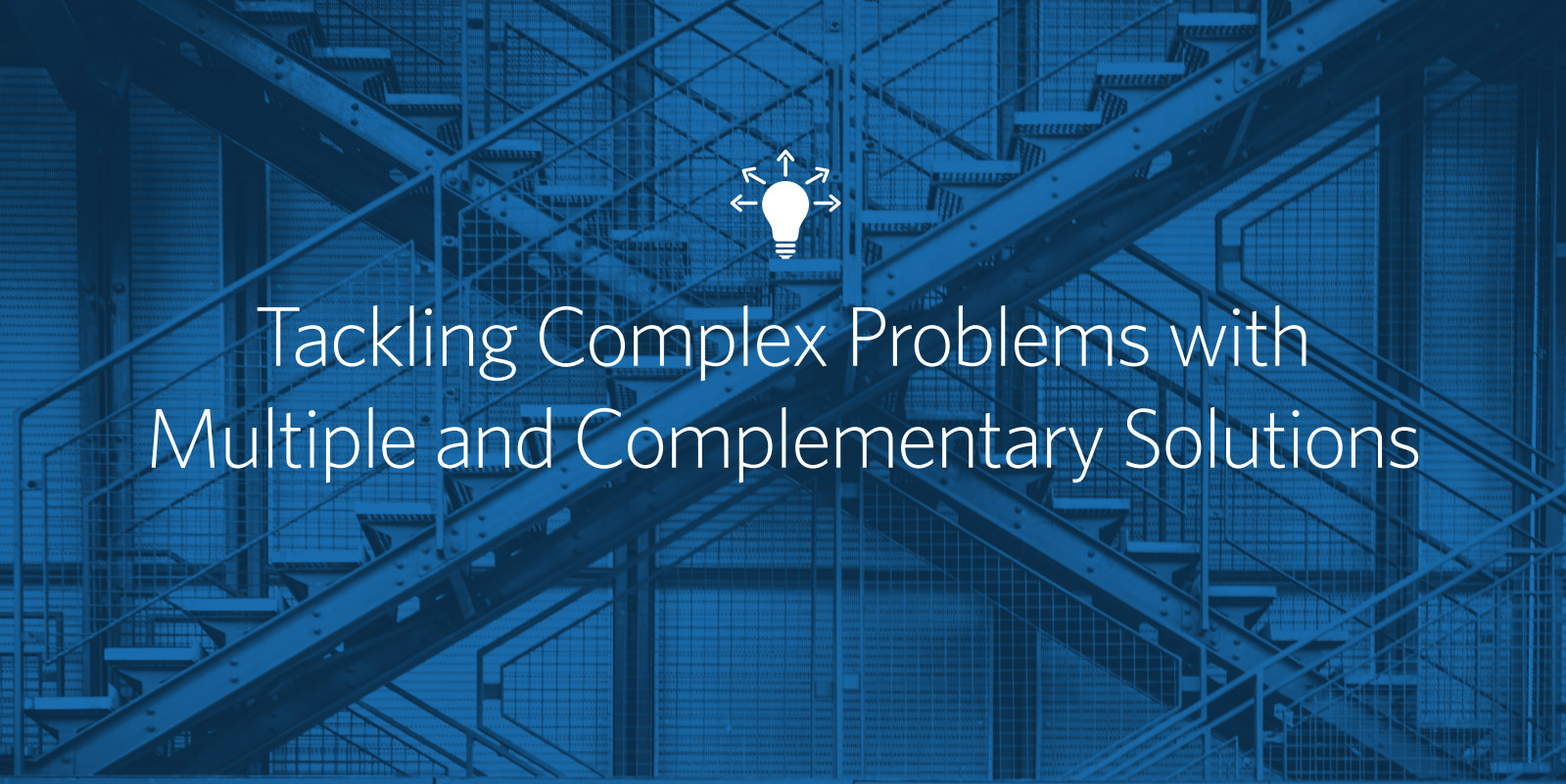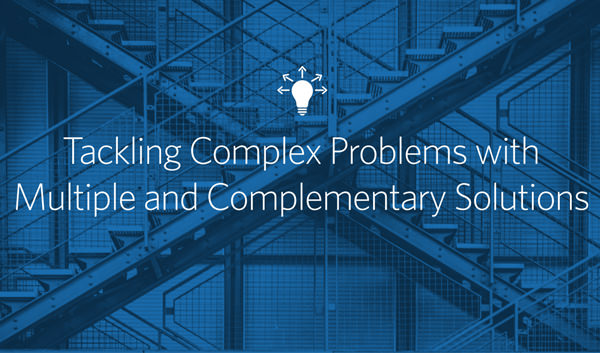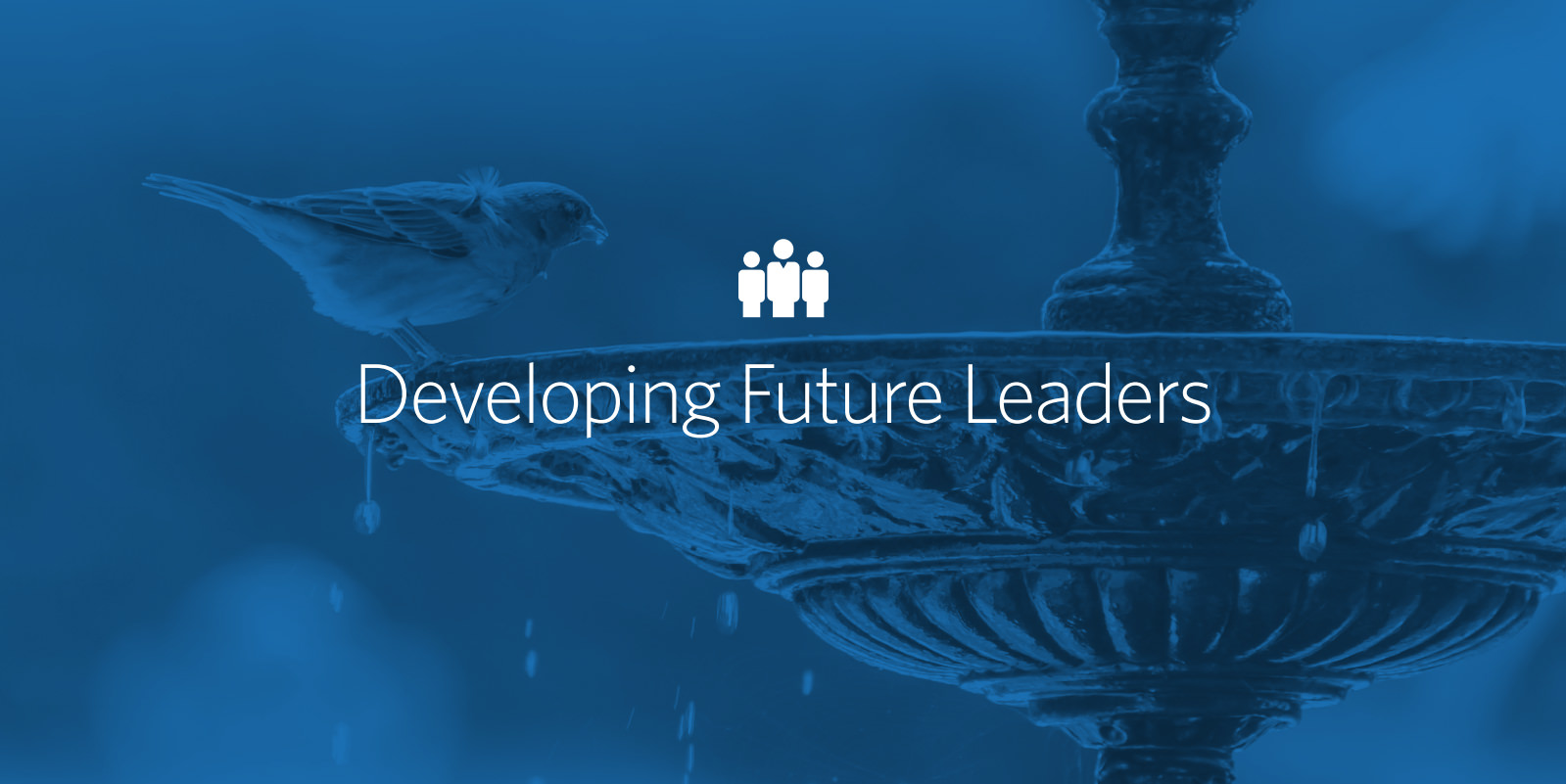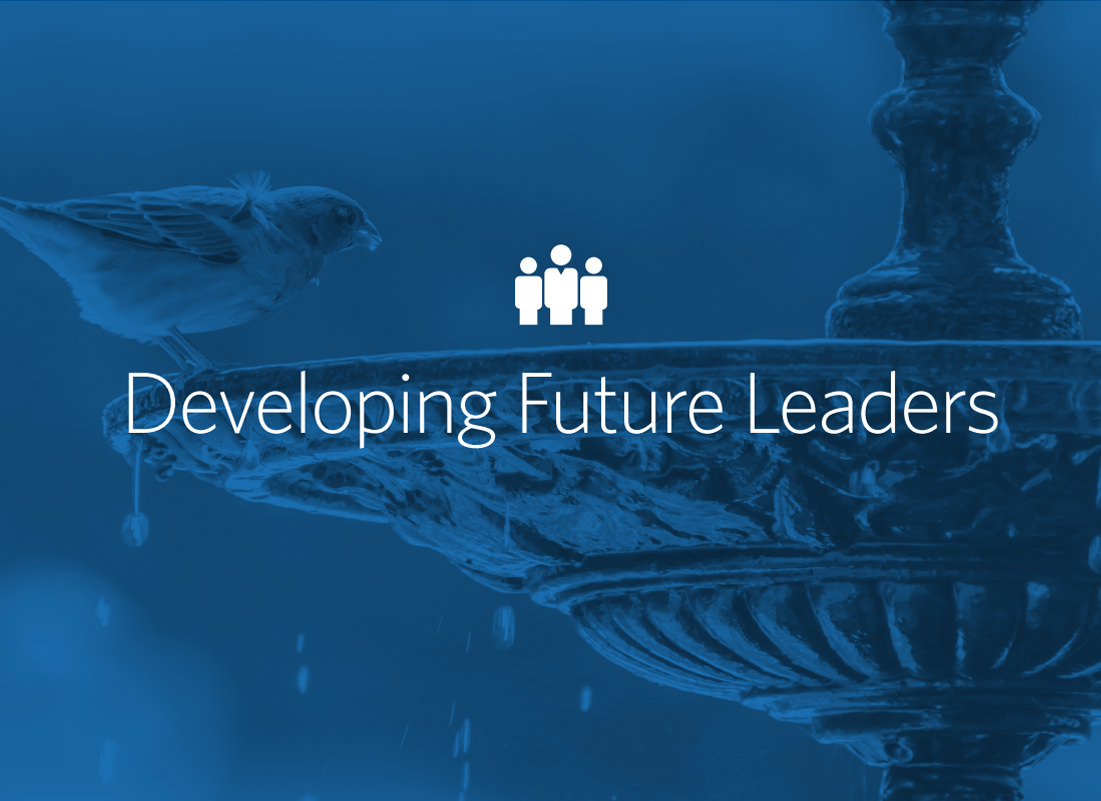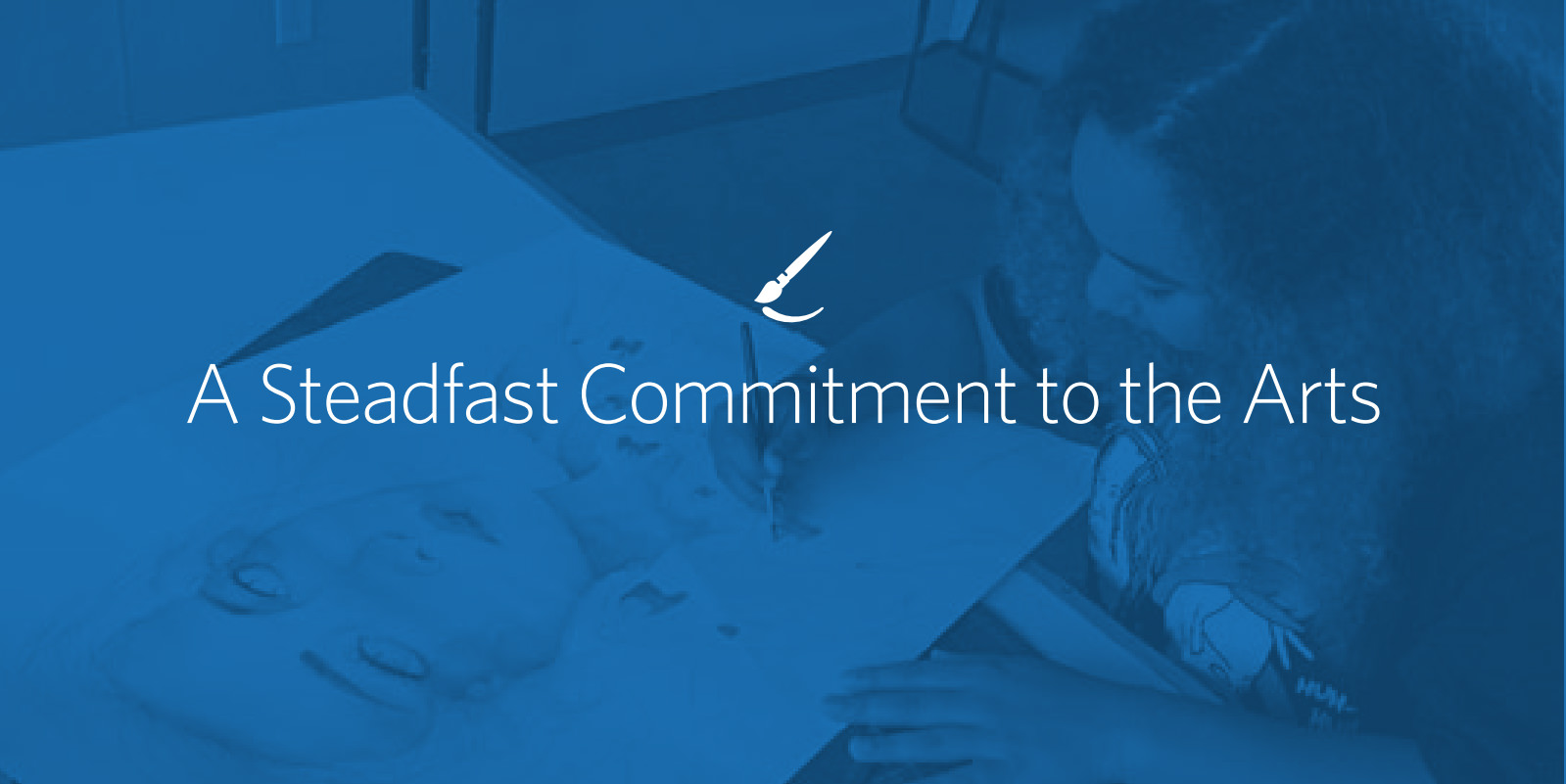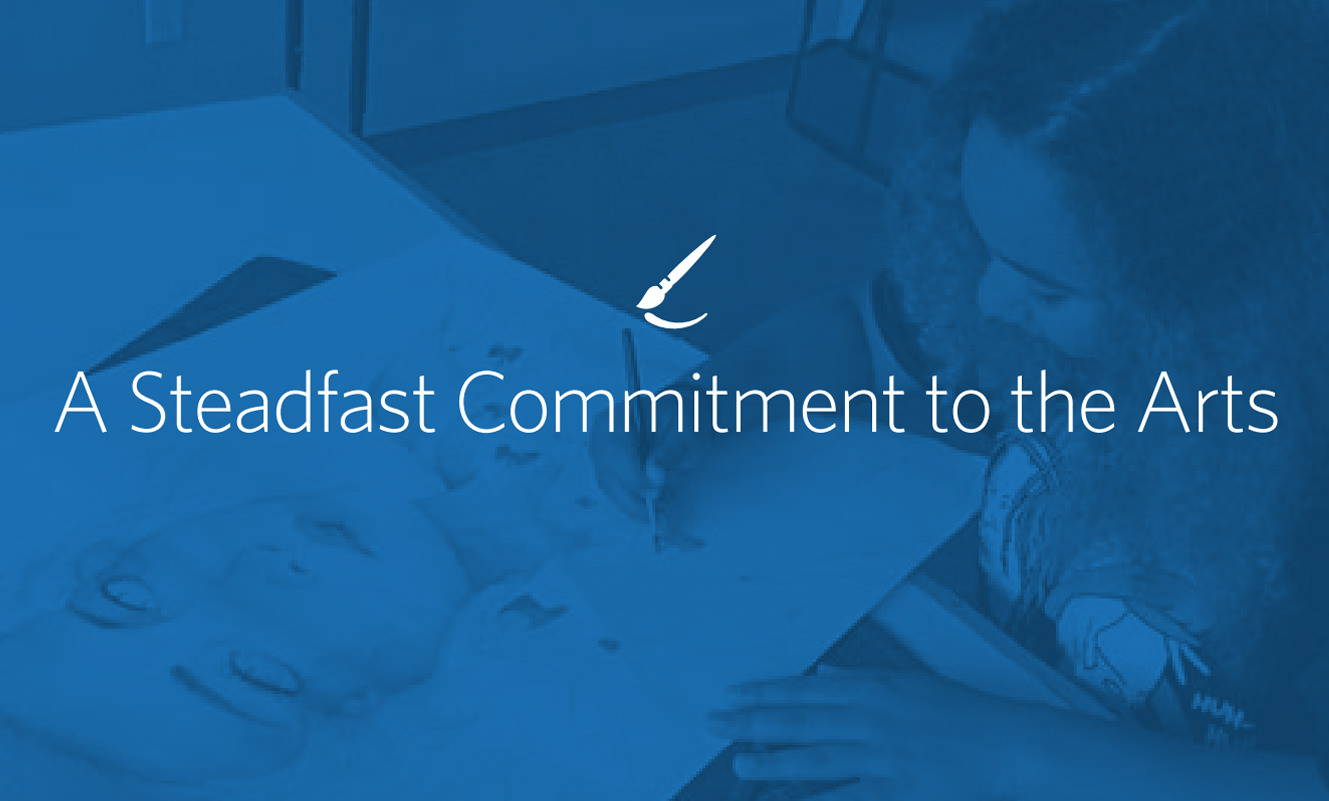From the very beginning, it was The Nicholson Foundation’s goal to work with state and local government agencies. We wanted to take advantage of the fact that government and the non-governmental sector constitute a mutually beneficial symbiosis. Government needs foundations and other non-governmental organizations to help advance its policies and programs, particularly through providing services. This creates opportunities for non-governmental partners to engage in the planning phase and help build the evidence base that makes government action desirable and possible. Government action can create a context where opportunities for investment can emerge and all can join in to ride a wave of change. Our work with government was integrally linked to partnerships we formed with nonprofits and ultimately, other foundations.
It took time to make contacts, build a reputation, and earn our way into the confidence of the dedicated people already striving to provide the right support, but in the end, we partnered with many state-level agencies and departments of New Jersey as well as with numerous counties and cities in the state.
Chapter 2 in Changing Systems, Changing Lives shows how we engaged with government to:
- Implement the In-Home Recovery Program, a new model of treating and supporting families with young children when a parent has a substance use disorder
- Reengage youth in education and career training through Youth Employment and Education Success (YE2S) centers
Read more about these projects
KEY TAKEAWAYS
- Recognize that government and the private sector play vital and complementary roles. The private sector has the flexibility to respond quickly to opportunities as they arise. Government, for its part, has the capacity to provide broad and long-term support, sustaining programs.
- Be sensitive to, and willing to align your work with, government’s unique strengths and constraints. If it is the goal of a project to be adopted by government, it is sensible to partner the development. That way, the service, funding, and political considerations government must contend with are naturally captured in the program design. Because of all these issues, government partners may need ample time to become actively engaged in and to commit to a project. This is especially important when the intervention involves a significant departure from established practice.
- Be nimble when partnering with government. You may need to quickly change and adapt if something unexpected happens, like a major public health emergency, a change of political will, or a sudden change in funding.
- Make formal and informal convenings a central element of your partnership efforts. These meetings can be a powerful way to bring together all stakeholders—government agencies, community organizations, and funders. Use them to gather information, highlight issues, encourage initial interest, gain commitments, and ensure continued buy-in and collaboration after programs are launched.
All across the country, research, advocacy, and policy organizations are developing and promoting evidence-based and best practice models to guide the work of service providers. The Nicholson Foundation actively sought out these models to inform its grantmaking.
Using models from outside as well as within New Jersey allowed us to benefit from a broad array of experience. It also gave our grantees an opportunity to import inspiration from elsewhere. Importantly, such replications provided proof-of-concept evidence for New Jersey, which was helpful in convincing payers to support the new efforts—ultimately facilitating systems change.
Chapter 3 in Changing Systems, Changing Lives shows how we elevated best practices and built evidence to strengthen the safety net primary healthcare system in New Jersey by:
- Funding an initiative to integrate behavioral health into primary healthcare for both adults and children, and to change the regulatory and licensing environment to make this service integration possible
- Supporting Project ECHO, a national tele-mentoring model that connects primary care providers with specialists, as a strategy for improving care for complex health conditions
Read more about these projects
KEY TAKEAWAYS
- Adopt and adapt. Find what works elsewhere and identify ways to use it or adapt it to specific contexts and circumstances. This is a smart way to facilitate improved, sustainable services and build evidence.
- Be willing to commit to providing resources over a long period. Patience is necessary to ensure that the right people, opportunity, mechanism, and other elements come together to make a project succeed. It also helps in dealing with the inevitable bumps in the road along the way.
- Make sure that potential partners understand that the science behind an initiative is what makes it a priority. Recognition by the partners that the project is a way to disseminate best practices and build evidence is important to generating equal enthusiasm and commitment by all.
- Capitalize on experiences grantees gain from funded projects. Help them spread their good ideas and new expertise to other local organizations. This approach to building home-grown capacity can accelerate the dissemination of best practices and ensure durable systems change.
- Understand that changing organizational culture takes time. It can be done only with engaged leaders and champions who are invested in building a team that is committed to the initiative for the long haul.
- Recognize that people who are closest to a problem often have the best ideas on how to address it. Partnering with local groups, such as community-based health organizations, can help them highlight the role that health-related social needs play in health and other outcomes. These partnerships also can help them accelerate efforts to reduce inequities in care and services.
- Remember that evidence evolves over time. Research may bring unexpected results—positive or negative. Be open and transparent about the results and their impact. Remember that the goal is not to enact a specific model, but to find out what really works to improve the lives of those you seek to help.
From the start, The Nicholson Foundation knew that forging partnerships as the centerpiece of our grantmaking investments was the best path for us to take. Over the years, we carefully selected grantee organizations to fund, and we nurtured those relationships through ongoing technical collaboration and regular review of progress. We also sought out other organizations, foundations, and state agencies and departments to join our work. Sometimes, it took considerable time and trial-and-error effort to find the right partners and the right project.
This approach had several advantages. Partnering brought diverse skills and experience to bear on a problem. This enhanced the likelihood that the project or initiative would achieve its aims and continue after our funding ended. It was good for us, too. It helped us hone our ideas and determine what was the best route for us to take in a particular issue. It also improved the Foundation’s visibility in New Jersey and enhanced our reputation as a committed player in the project’s focus area.
Chapter 4 in Changing Systems, Changing Lives shows how we nurtured partnerships to:
- Carry out multiple projects over a period of years with the New Jersey Health Care Quality Institute
- Tackle Adverse Childhood Experiences through a collaboration with multiple partners
- Determine the right investment “fit” for us in healthcare innovation
Read more about these projects
KEY TAKEAWAYS
- Spend time and effort to find the right partner. It’s a wise investment. The right partner is one whose values are aligned with yours and who also sees the project as a priority. Use various strategies, such as recruiting a specific partner or issuing an open request for proposals.
- Talk to as many people as possible when starting new work. Learn about priority needs, local resources, and opportunities for action. This will help identify potential partners—both those within and beyond the groups with whom you usually work—who are ready to collaborate and generate real impact.
- Understand that potential partners may have various reasons for wanting to change policy or pursue programs. Take time to learn about these motivations, and build them into your planning. This will increase the chances of being able to enact the change you desire.
- Create a partnership that’s just the right size. Make it big enough to be inclusive but small enough to act efficiently.
- Acknowledge and respect the unique strengths and qualities of each partner. Having the same goals and being willing to work collaboratively is essential to effective, trust-based partnerships and enhances the likelihood of long-term success.
- Consider starting small with a partner. A modest initial project can provide time to determine whether the collaboration works, if modifications are needed, and whether it would be better to “go it alone.”
To execute great ideas and realize their potential, organizations need enough of the basics—staff, data analysis capability, equipment, policies and procedures, and management-information infrastructure. The Nicholson Foundation recognized that support for organizational nuts and bolts could be a critical element of its overall systems-change strategy.
Nuts-and-bolts funding is a good approach. It allows grantees to hire staff to carry out specific activities funded by the grant, such as data analyses or care coordination. It also supports essential everyday functions, such as accounting, grants management, administration, advisory board activities, strategic planning, and efforts to pursue new funding opportunities. Infrastructure support also enables organizations to make the best use of their space and resources so they can respond to emerging or urgent needs in the community.
Chapter 5 in Changing Systems, Changing Lives shows how we used nuts-and-bolts funding to:
- Help community-based healthcare coalitions to become engines for population-wide systems change and health improvement
Read more about this project
KEY TAKEAWAYS
- Help grantees build their organizational capacity. Supporting activities such as grant writing, development, and strategic planning strengthens organizations so they can continue their work after grant funding ends.
- Invest creatively. Even a small infusion of funds may provide an essential boost to an organization that already has a stable funding stream and needs just a little extra help to make a new idea blossom.
- Look for opportunities to ensure full implementation of proven models by providing sufficient and directed resources. Under-resourced initiatives may struggle to robustly implement best practices or maintain fidelity to evidence-based models. Sufficient funding can help organizations—from state Medicaid agencies to small service providers—carry out these initiatives successfully.
- Prioritize the development of information technology hardware and software and organizations data analytic capability. This includes the ability to collect, analyze, and use data specific to a place and a population as well as to create integrated data sets that cover multiple aspects of health, well-being, and health-related social factors. Local and integrated data have immense value for informing practice because they highlight and explain critical issues affecting communities. They also can point to the multisector efforts that are required to successfully address these issues.
- Engage many community groups and government agencies in collecting data and applying their findings. This information can be invaluable for making decisions and creating programs with durable impact.
Healthcare, early childhood care and education, and social services are complicated, and all too often not available or affordable. This makes it hard for people, families, and communities to get what they need to succeed. The Nicholson Foundation invested in flexible and complementary systems change strategies. These strategies were intended to raise awareness of the importance of these issues, make the services easier to access, and improve their quality, affordability, and equity.
Investing in multiple and complementary strategies made sense. It engaged a variety of players who had the necessary skills, expertise, and experiences to adequately address the problem. It created bodies of evidence to support future initiatives and partnerships. And, it allowed grantmakers to share ideas with government, and helped government attend to priority needs that it might not have been able to address on its own.
Chapter 6 in Changing Systems, Changing Lives shows how we used multiple approaches to problem-solving to:
- Improve the availability of, and access to, quality early childhood care and education
- Support Family Success Centers, a “one-stop” solution to help families easily and efficiently connect to multiple social services and other helpful resources
- Enhance the equity of maternal health care and reduce maternal and infant deaths and injuries during childbirth and the first year of life
Read more about these projects
KEY TAKEAWAYS
- Recognize the inherent complexity of some problems. Don’t be daunted by what seems like a huge or intractable problem. Multiple organizations or complex approaches may be needed to successfully tackle these types of issues. It’s okay to accept the reality of slow change over time while still being impatient about getting to that change. Recruit others—especially those directly affected by the issue—who can bring big thinking and diverse skills, experience, and perspectives to devising solutions. These collaborations can spark fresh ideas, bring in new viewpoints, identify common goals, and enhance the focus on areas where combined action may lead to great impact.
- Be aware that complex problems evolve over time in response to external events. Work with collaborators within and across partner organizations to devise flexible and realistic short- and long-term goals and objectives that can accommodate these changes. Philanthropy can provide consistent leadership and stability even if other partners come and go.
- Take advantage of the role that philanthropy can play as a neutral convener. Foundations can bring together agencies and organizations that have different perspectives and priorities and that may not regularly communicate. This can create opportunities for joint action on problems of common interest.
- Prioritize clear and persistent communications with policy makers and influencers about gaps in services. Highlight potential opportunities for filling those gaps. Keeping these issues visible is necessary to motivate action that enhances access to affordable, quality services. This is especially true when a new public health or policy issue becomes the dominant focus of attention, pushing other issues to the back burner.
- Start with a strengths-based approach when planning social service interventions. Supporting programs that give families and communities the power to address their own needs is a positive approach with long-term potential.
- Do the homework. Study closely the history of what has been done and what approaches have been taken in the area of concern. Before enacting a proposed solution, know what specifically has been done in this area, and how those reforms have fared.
- Catch a wave. A swell of political or public interest can carry an initiative a long way.
Effective and sustainable systems change cannot occur without flexible and strong leaders who are committed to the process. Leaders are the people in positions to influence funding, manage programs, set policy, develop regulations, and lead initiatives.
Investing in developing good leaders was a good strategy for us because it increased the likelihood that projects and initiatives would continue and flourish over time. The process of developing good leaders also provided opportunities to bring people together and build lasting relationships. Given the siloed nature of many government, health, and human services agencies, emerging leaders might never have interacted without these opportunities. Bringing future leaders together also helped to highlight common goals and enhance the potential for leveraging investments across multiple systems, creating opportunities for powerful, collaborative action.
Chapter 7 in Changing Systems, Changing Lives shows how we thought creatively about developing leaders when we:
- Supported the Medicaid Academy, a leadership training program for Medicaid staff and those of related agencies
- Improved the practice of pediatric care in New Jersey by helping medical residents engage with their local communities through the New Jersey Pediatric Residency Advocacy Collaborative
Read more about these projects
KEY TAKEAWAYS
- Invest in programs designed to develop future leaders. Nurturing people and providing opportunities for them to become leaders is a powerful way to foster systems change.
- Promote collective learning. These experiences foster long-lasting connections and a sense of community, and can generate more impact than one-on-one training.
- Seek out people who have diverse professional and personal experiences and who play various roles in their organizations. This approach creates a strong mix of participants who bring multiple perspectives that enhance the sharing and learning of specific content and strategies.
- Invite participants who have not previously worked together. This can lead to unexpectedly strong collaborative relationships and new initiatives that endure long after the leadership development project has ended. These relationships are especially important for staff who come from state agencies or departments that may not otherwise have the opportunity to collaborate. Building strong interagency relationships is important for the present and the future.
- Cast a wide net. It’s hard to predict which individuals starting their careers will end up reaching the top rungs of power—and will remain working in a particular field of interest. Building large and inclusive training cohorts provides the best chance of influencing future leaders.
Beginning in 2011, The Nicholson Foundation funded a number of arts projects in North Carolina and New Jersey. These projects supported programs and facilities designed to serve as community hubs to strengthen the bonds between people through a common appreciation for the value and joy of the arts.
Like the Foundation’s other grants, these projects also aimed to improve the health and well-being of vulnerable populations. The funded organizations explicitly reached out to their local communities to ensure equitable access to programs by residents of all income levels and ages.
Chapter 8 in Changing Systems, Changing Lives shows how we supported:
- An in-depth arts and craft residency at North Carolina’s Penland School of Craft for students attending the GlassRoots glassmaking center in Newark, New Jersey
- An art class for men at North Carolina’s Avery-Mitchell Correctional Institution, culminating in an exhibition of their works at a community venue
- An arts education program for adults and youth, from toddlers to teens, at the ArtsCenter, located in Carrboro, North Carolina
- New or renovated buildings for GlassRoots, Penland School of Craft, the ArtsCenter, and the Pocosin Arts School of Fine Craft
Read more about these projects

